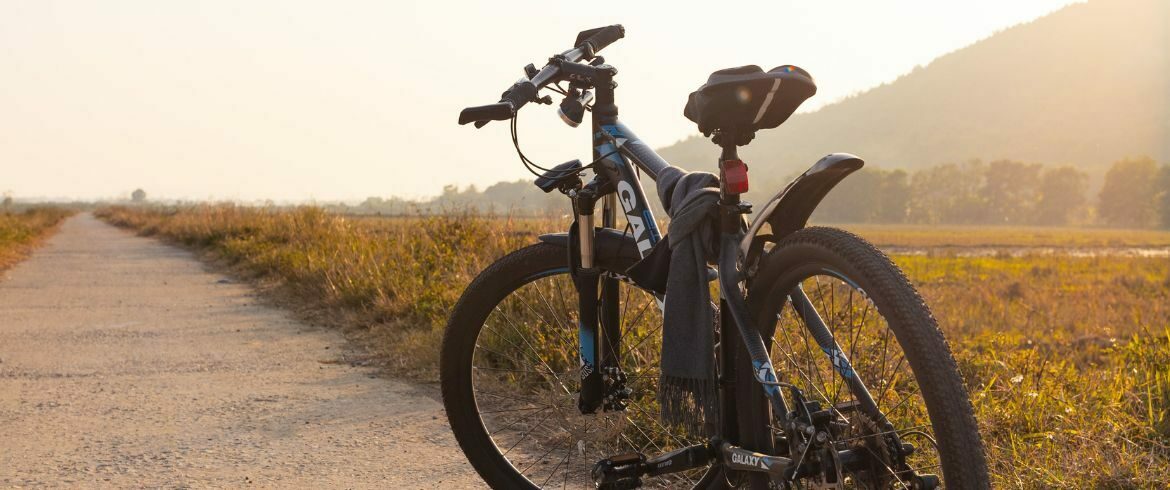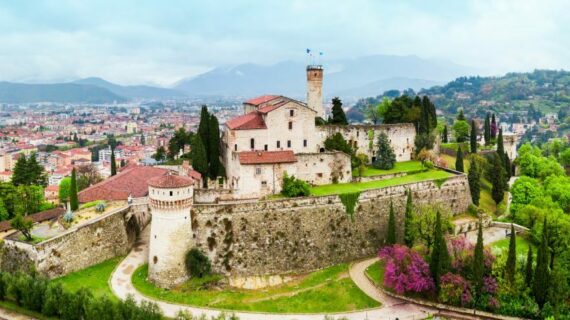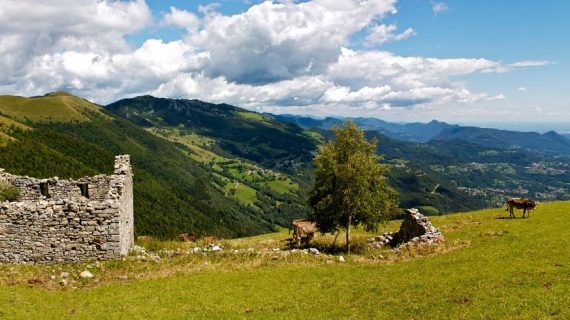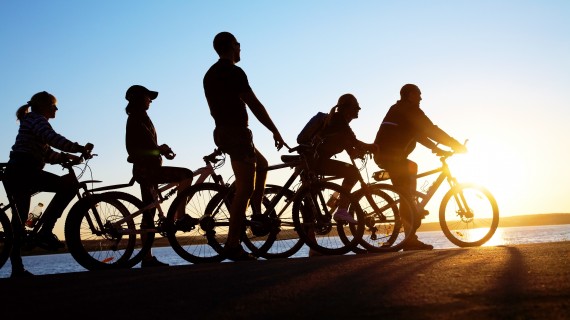The Bergamo-Brescia culture bike path stretches for 76km, crossing 34 villages and historic centres, all to be discovered, with 872 items of historic and cultural interest.
The route also includes 13 additional loops and some pedestrian links, which allow you to reach many extra stages. In this way you will reach a total of 170 km of slow routes, surrounded by nature, history and culture.
A path for everyone
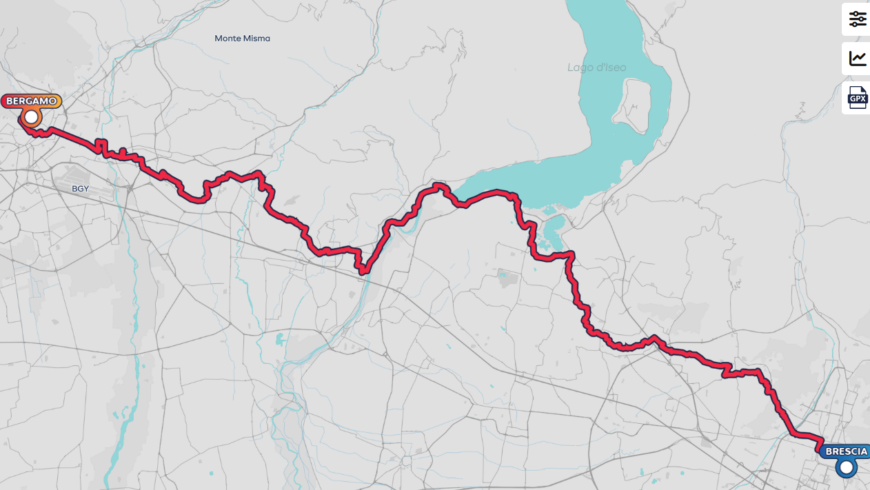
This bike path is bidirectional and starts from emblematic places of both cities, offering a route suitable for everyone. It is perfect for those who love cycling and slow tourism, combining sports and cultural discovery.
Between culture and nature: the Bergamo-Brescia culture bike path
This route was created to celebrate the union between the two cities, capitals of culture in 2023.
Born as a corridor between villages, churches, vineyards, castles and hills, allowing you to discover places full of charm and history.
How about exploring some together?
The most beautiful points of interest of the Culture Bike Path
Upper town – Bergamo
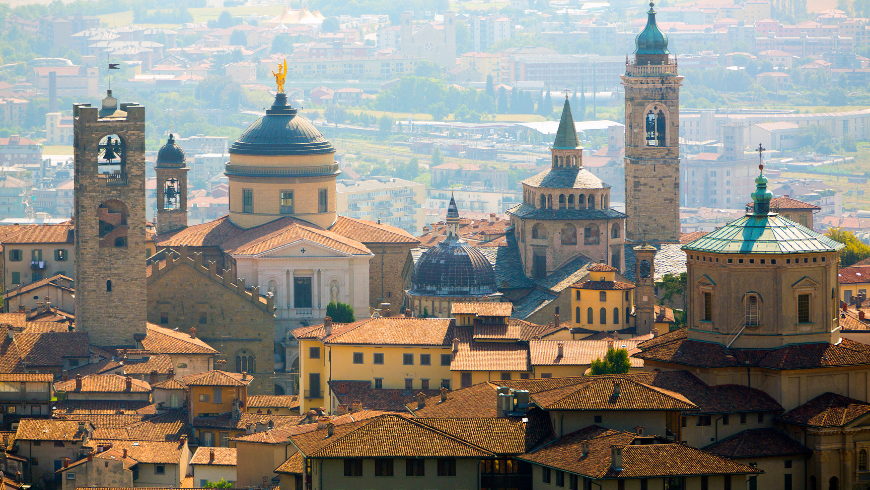
Upper town is the medieval heart of Bergamo, ideal for admiring a splendid view over the Lower Town, the most modern part of the city.
Going down, you arrive at the Museum Pole, which includes the Carrara Academy and the Gamec.
Lower Town – Bergamo
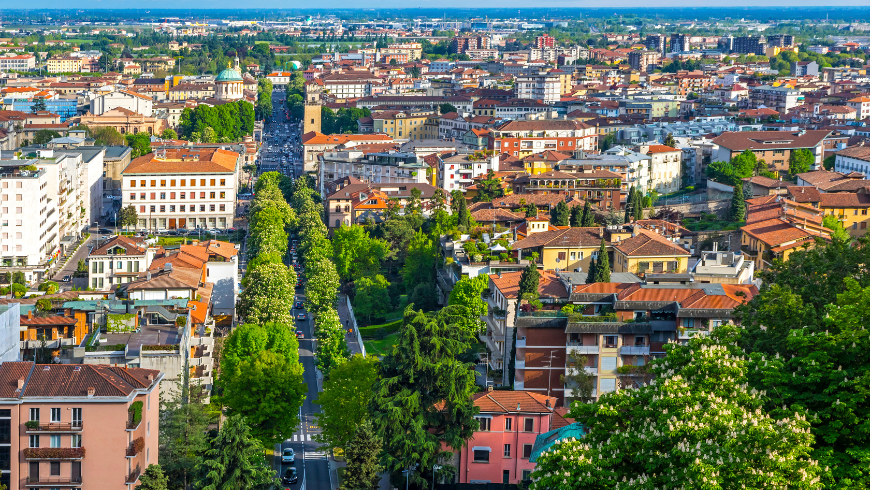
Lower Town represents the most modern part of the city. Its centrepiece is the Piacentiniano Centre, the result of the work of the Quaroni Engineer and the Piacentini Architect in 1907 to redevelop the area of the former Fiera di Sant’Alessandro.
Over time, it has been enriched by buildings of great importance, such as the Teatro Donizetti and the imposing Torre dei Caduti.
Bergamo seriate west
Around the year 1000, to go from Bergamo to Brescia was necessary to cross the river Serio. The medieval bridge became a strategic crossing point, favouring the birth of Seriate.
In the old town, to the north, there is the splendid Villa Cinquecentesca dei Tasso. It once housed Torquato Tasso and Gianbattista Tiepolo.
Serio park
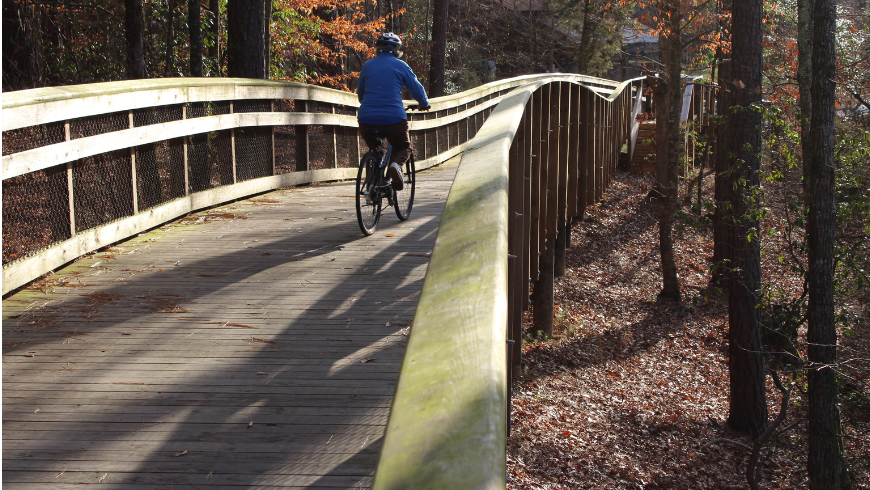
The Serio park was established in 1985 to protect the biodiversity between Bergamo and Cremona. It covers 7,750 hectares, following the course the river Serio until its confluence with the Adda.
Brusaporto
Brusaporto is a village in the province of Bergamo known for viticulture handed down for centuries. Here you can admire the remains of an ancient medieval fortification a the Villa Belvedere, with its charming crenellated tower.
Very nice, finally, the Public Park that gives you the opportunity to relax before going on with the bike tour.
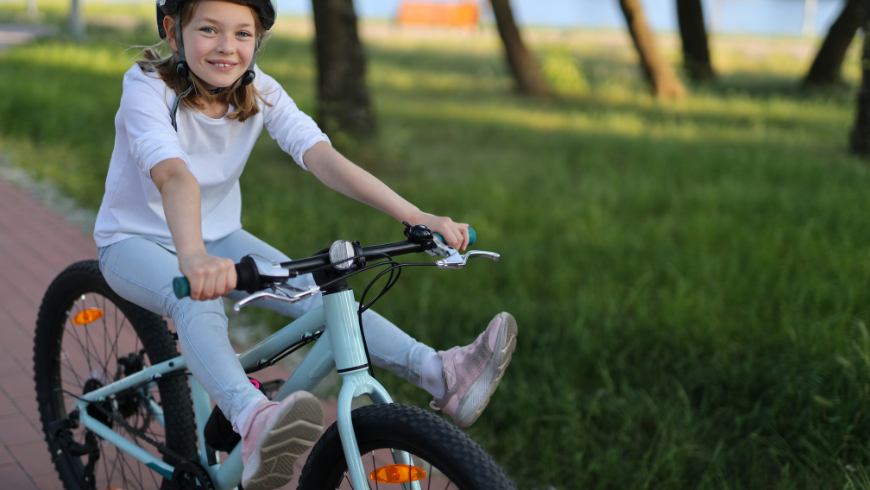
Mezzate Centro coast
Costa di Mezzate is what we call a classic medieval village. It is characterised by the Camozzi Vertova Castle which, however, can only be visited occasionally with guided tours.
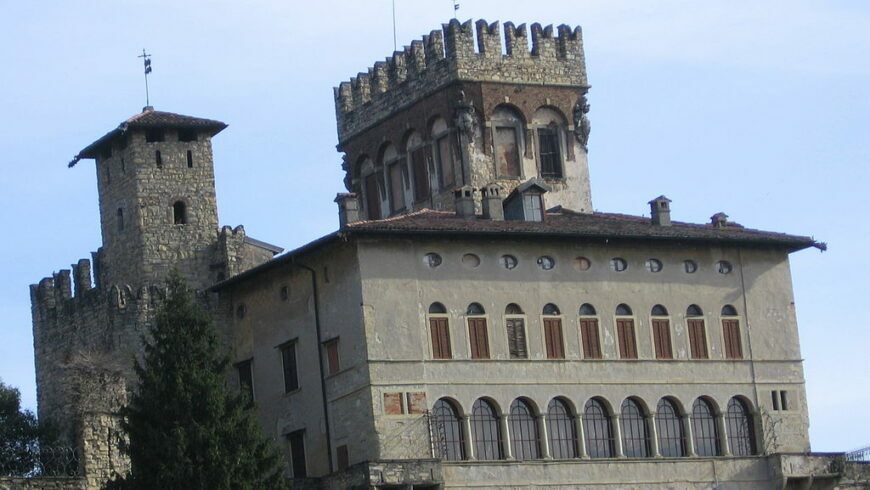
The town is really rich in history as, for example, the Torre degli Zoppi and Rasetto of medieval times with a watchtower that is connected to the castle.
And there is also a legend, you know? They say that in the night you can hear the footsteps of Garibaldi!
Carobbio degli Angeli
Carobbio degli Angeli is characterised by the homonyms Castle, the Church of Santo Stefano of the eighteenth century that is positioned on a hill with including the small Church of Santa Maria di Lourdes with a wooden Madonna dating back to sixteenth century work of Pietro Bussolo.
And once there, look out onto its terrace from which you will enjoy a unique visit to the country.
Sarnico
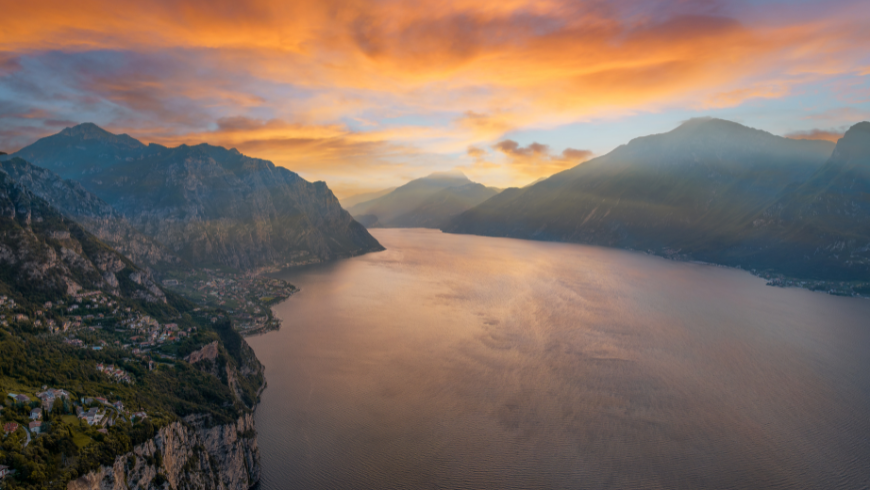
Sarnico has been one of the rich villages on a national level due to its perfect location.
The town is still rich in Art Nouveau buildings, mostly by the Milanese architect Sommaruga who was commissioned in 1907 to transform an old spinning into a villa in Art Nouveau style.
Small innocent parenthesis the Art Nouveau style is characterised, mostly in motifs inspired by both the floral and vegetable world in general.
Paratico and the Park of Dancing Herbs
The Park of Dancing Herbs in Paratico is located right on the lakefront. It is about 8,000 square meters that until 1998 was the perfect place to exchange between trains carrying steel products and barges. Even Today you can see the rails although it was, then, converted to a park with flowers and herbs that float on the water.
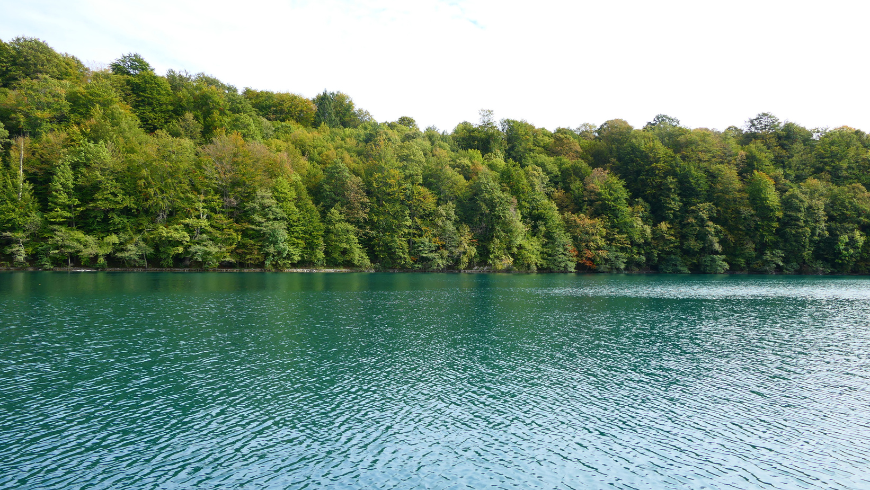
Iseo lake and the Bogs
The lake is part of the Unesco Biosphere Reserve of Val Camonica – Alto Sebino and is a true paradise for nature lovers. It’s perfect to be admired on your two wheels!
The Sebino peat bogs are a wetland of international importance.
Bornato
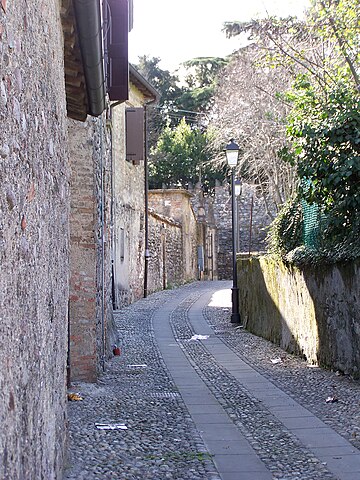
https://commons.wikimedia.org/w/index.php?curid=9869902
The part of Bornato consists of a Roman stronghold which was intended to defend the consular road linking Bergamo and Brescia.
The castle is characterized by being surrounded by 300 meters of crenellated walls with a drawbridge, moats and towers. Dante Alighieri also passed by here.
It is currently privately owned and can only be visited by appointment. For more information click here Castello di Bornato.
I recommend you to stop for a short stop at the Naturalistic Area that is located by the small lake.
Paderno Franciacorta
Paderno is characterized by being the smallest village of Franciacorta. Worth mentioning the medieval castle that is located in the main square of the town, but also the sixteenth-century Chiesina di Santa Maria in Castello.
Rodengo Saiano
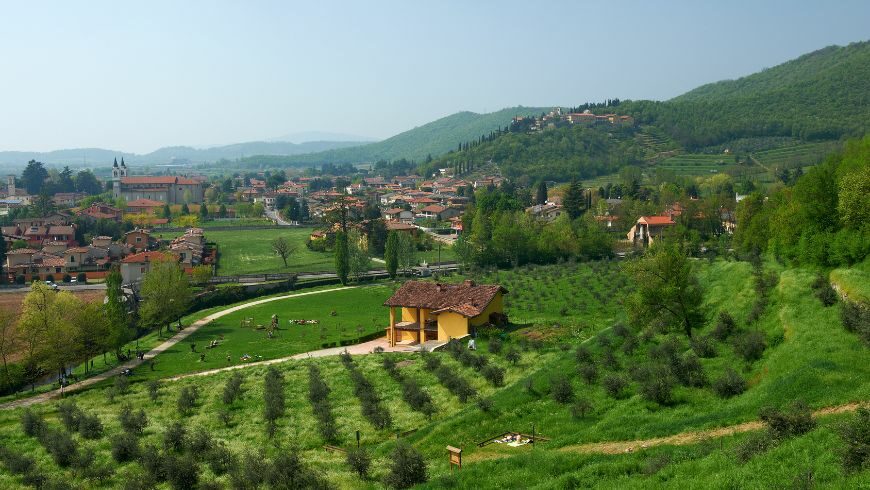
Rodengo Saiano is located in what is called the Park of the Hills which turns out to be one of the most extensive green areas in the area. Very beautiful, among other things, the complex of Villa Maria in which there is a historical and cultural heritage really very interesting.
Its neo-Gothic facade is adorned with spires and portals while inside, in the park, there is villa Paolina that stands on the remains of an ancient castle that stood, in turn, on the remains of a building from Roman times.
However, the peculiarity is that of the Church of Santo Stefano overlooking the complex while the apse remains on the square of the village.
Corneto
Corneto is a beautiful village of rural origin that has only fifty inhabitants, however in the center of the country is the beautiful Villa Fenaroli.
The building dates back to the 18th century but was modified by the architect Tagliaferri in the 19th century in neo-baroque style. This building represents all the classic villas of Brescia with two low side wings and the central part high. Nowadays it is a beautiful manor house.
Sale
The name of the village, Sale, comes from the Sala family who were the lords of the area in the Middle Ages.
Worth mentioning is the Caprioli Palace, which is thought to date back to the fourteenth century and for 500 years was the home of the Caprioli family and the building is characterized by frescoes.
Nowadays it is the seat of a cultural centre.
Brescia, centre
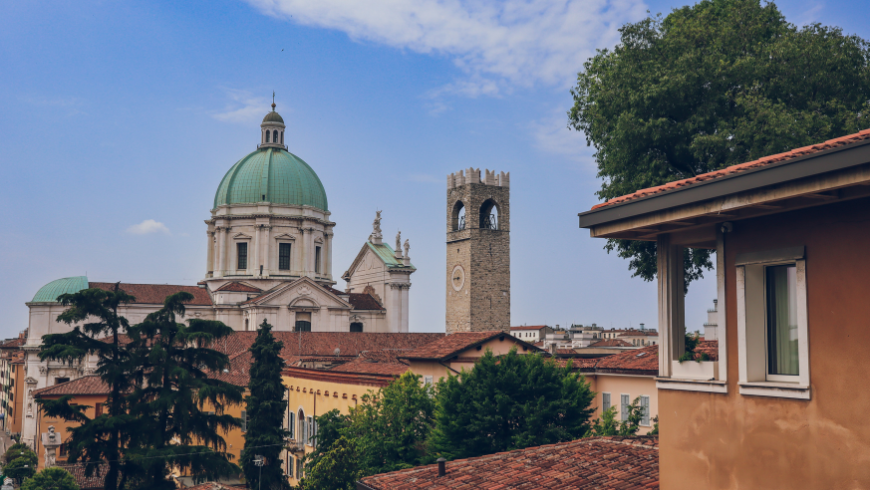
And our bike tour ends in Brescia.
In this beautiful city there are really many interesting things to see such as, for example, the Sanctuary of Madonna delle Grazie, the museum of Santa Giulia, the Castle and the Broletto.
For more information read my guide to Brescia.
Who can ride the bike path?
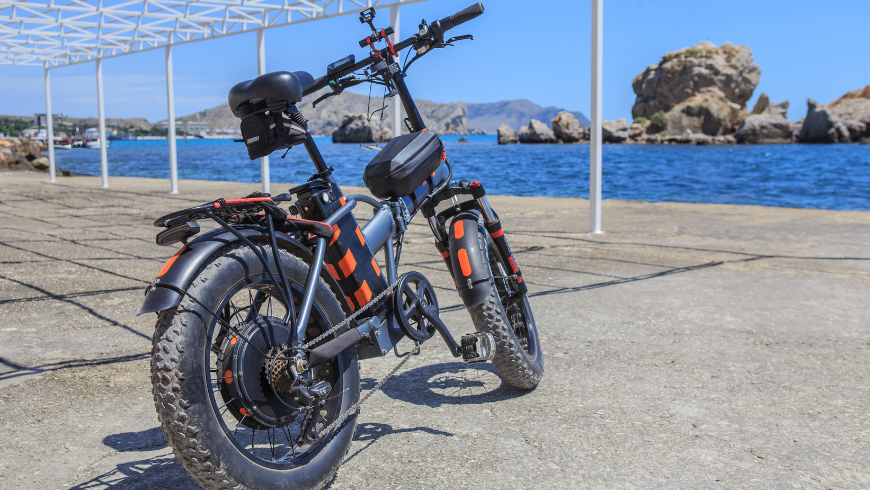
The route is suitable for everyone: from sportsmen to families with children, up to people with frailty. Numerous e-bike recharging points are available along the way, making the experience accessible to all.
The Bergamo-Brescia cultural cycle route is not just a cycling route, but a journey through centuries of history, nature and culture.
Whether you are a cycling enthusiast, an art lover or a village explorer, this itinerary will surprise you at every ride!
Cover photo Source Canva Pro
